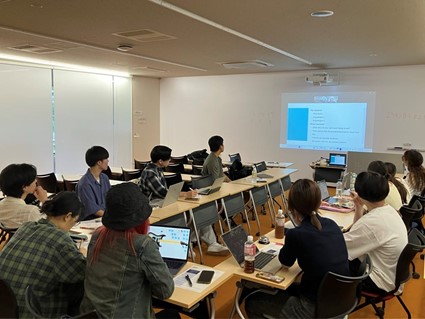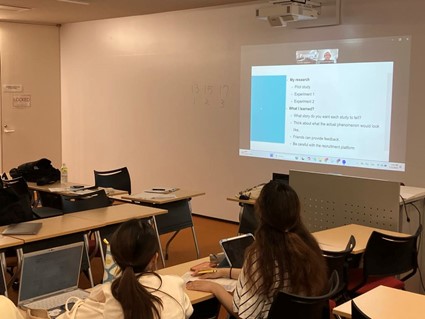国際経営学部
[Faculty of Global Management] Mr. Pasit (Peter) Sararueangpong from the Queensland University of Technology (QUT) in Australia delivered an online lecture during the Seminar 2 course (Instructor: Associate Professor Toyohiko Sugimoto]
On July 11th, Mr. Pasit (Peter) Sararueangpong from the Queensland University of Technology (QUT) in Australia delivered an online lecture titled “How does Promotion Focus influence consumer response toward chatbot recommendations?” based on his published academic article during the Seminar 2 course (Instructor: Associate Professor Toyohiko Sugimoto, Faculty of Global Management [GLOMAC]).
Mr. Sararueangpong is a sessional academic at the School of Advertising, Marketing, and Public Relations, QUT Business School. He is a specialist in consumer behaviour and holds three Master’s degrees: a Master of Philosophy from QUT, a Master of Commerce, and a Master of Public Relations, Advertising, and Applied Communication from The University of New South Wales (in Australia). He is one of the distinguished young scholars in the field of consumer behavior. At an early stage of his academic career, he has already published his international collaborative research in a Q1 journal, Journal of Consumer Behaviour (based on the Scientific Journal Rankings criteria).
In the first half of his presentation, Mr. Sararueangpong introduced his research project examining how individual differences in
promotion focus impact on consumers’ purchase likelihood for the products recommended by chatbots. A chatbot (e.g., customer service chatbots, e-commerce chatbots) is a form of artificial intelligence (AI) that provides automated responses and engages in real-time live chat with customers. Specifically, the research highlighted that, in general, consumers exhibit lower purchase intentions for products recommended by chatbots compared to those recommended by humans. However, individuals with a high promotion focus report greater purchase likelihood than those with a low promotion focus. He underlined that the research insights can be used to enhance consumer responses to chatbots through segmentation strategies (i.e., targeting individuals who are chronically oriented toward a promotion focus) and the use of promotion-focus-related language (e.g., “Hi. I'm here to help you achieve your goal”) by chatbots.
In the second half of his presentation, he kindly shared his insights and tips for conducting successful academic research. These included advices such as: “Think of the project as a whole, what story do you want each study to tell?” and “Ask your friends to review your plan. Their feedback can help you polish your study”.


Most seminar students demonstrated high levels of concentration and active engagement throughout the lecture. In the Seminar 1 course last year, students had already covered key concepts in research methods (e.g., research design, data collection, data analysis), so Mr. Sararueangpong’s presentation served as an excellent model case, allowing them to apply their knowledge to analyzing his research through the lens of research methodology.
Following his presentation, students actively asked questions.
These include some specific enquiries about his research: “May I see the item list (i.e., question list) used to measure regulatory focus?” and “What is the meaning of a 2 × 2 between-subjects study?”. There were also more general enquiries such as “How can we identify an interesting research topic?
Overall, it provided a valuable opportunity for GLOMAC seminar students to develop their research competencies and academic communication abilities.
